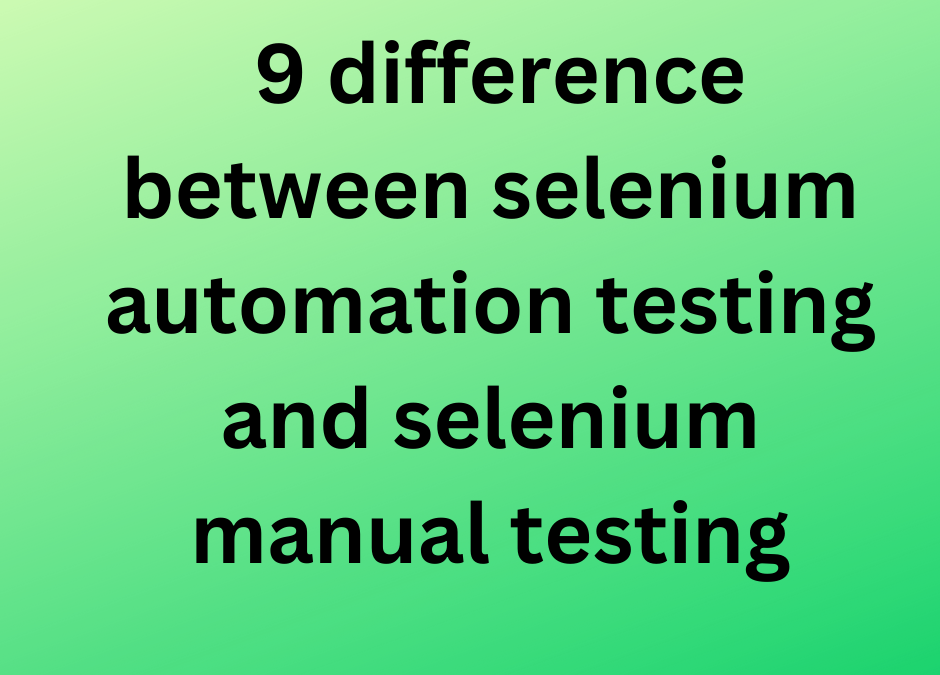In the realm of software testing, two prominent methodologies have emerged as the frontrunners: manual testing and automation testing. Among the tools available for automation testing, Selenium stands out as a versatile and widely-used option. In this blog post, we’ll delve into the key differences between Selenium automation testing and Selenium manual testing, shedding light on the unique advantages and challenges each approach presents.
1. Human Interaction vs. Script Execution: Manual testing involves testers interacting with the application as end-users would, exploring its features, and identifying bugs through hands-on interactions. On the other hand, Selenium automation relies on scripts to simulate user interactions, running repetitive tests swiftly and consistently.
2. Speed and Efficiency: Automation testing outshines manual testing when it comes to speed and efficiency. Automated scripts can execute a vast number of test cases in a fraction of the time it would take for a human to manually perform them.
3. Reusability and Maintainability: Selenium automation testing offers better reusability of test scripts. Once written, these scripts can be applied to different versions or builds of the software, thus saving time and effort. Manual tests, however, need to be repeated for each iteration, which can become time-consuming and error-prone.
4. Repetition and Regression Testing: Automation shines in repetitive tasks, such as regression testing. Running the same test cases multiple times manually can lead to human errors and inconsistencies. Automation ensures tests are executed exactly as intended every time.
5. Exploratory Testing: Manual testing is superior for exploratory testing, where testers employ their intuition and creativity to uncover unique bugs and issues that might not be covered by automated test cases. Human intuition plays a vital role in such scenarios.
6. Initial Investment vs. Long-term Gains: Setting up an automation framework and writing scripts requires an initial investment of time and resources. However, in the long run, automation pays off as it reduces the time and effort needed for repetitive testing cycles.
7. Skill Set and Training: Manual testing is comparatively easier to start with, as it doesn’t require in-depth programming knowledge. On the other hand, Selenium automation demands programming skills to write and maintain scripts, making it more suitable for testers with technical expertise.
8. User Interface Changes: Selenium automation testing can be sensitive to frequent user interface changes. Even minor modifications might necessitate script adjustments, which can increase maintenance efforts. Manual testers, while slower, are more adaptable to UI changes.
9. Early vs. Late Bugs Detection: Manual testing is excellent for uncovering usability issues, design flaws, and user experience problems early in the development cycle. Automated tests tend to focus on functional aspects and can catch integration issues, regression bugs, and other technical problems later in the cycle.
Sign up for SparkDatabox’s top-notch Selenium automation testing course to gain expertise in efficiently automating tests and enhancing software quality assurance.
Conclusion: Choosing between Selenium automation testing and Selenium manual testing depends on your project’s specific needs, timeline, and the nature of the application being tested. While automation offers speed, repeatability, and efficiency, manual testing shines in exploratory testing and adapting to changing user interfaces. A balanced approach that combines both methodologies can yield the best results, ensuring the delivery of a high-quality software product that meets user expectations while minimizing bugs and issues.

